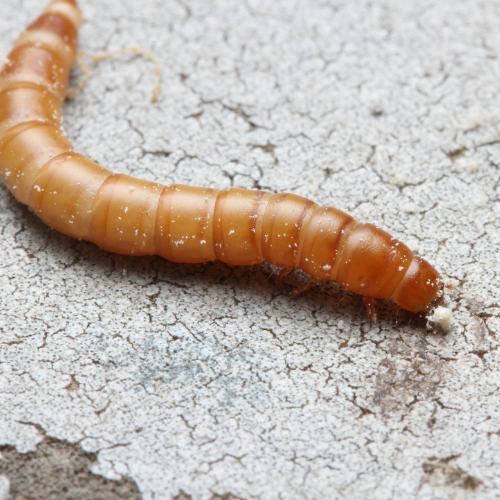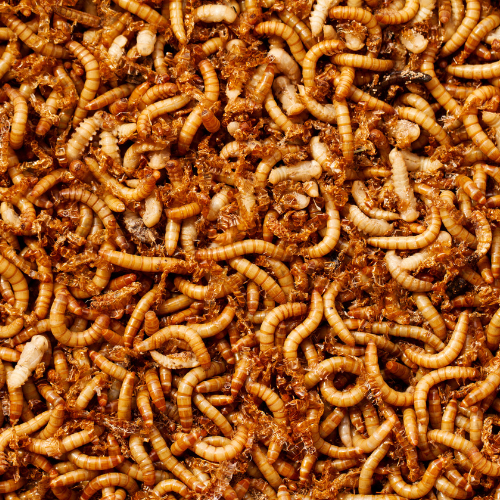Mealworms are a delicious treat that may be given to many different types of dog species. You may know the hazards of getting bitten by a pet, but not by their food.
Mealworms can bite using their jaws. However, they are not hostile and do not bite when held. The mouth of a little mealworm is considered too small to be able to cut through the flesh of a body. Large mealworms or superworms have larger jaws that are better capable of biting the skin.

The bite of a typical mealworm will never pack enough punch to cause serious injury to a dog. Whether you intend to give worms to a hungry pup, make friends with the local birds, or observe their life cycle, you should know certain key things before handling them.
What Are Mealworms?
Mealworms are not even properly classified as worms. They are a kind of parasite. They are the stage of the beetle that is called the larva. There are four major stages of development that beetles go through:
- Egg
- Larva
- Pupa
- Adult

A darkling beetle egg may hatch between four and twenty days after being placed. The egg will eventually hatch into a mealworm. Mealworms begin the pupa stage of their development by encasing themselves in an exoskeleton and crawling into a cocoon. The adult beetle rises from its exoskeleton after a development phase and hunts for other beetles to lay eggs, restarting the process. A single female darkling beetle can lay up to 500 eggs during her lifetime. Her life span is around one year. Because of this, there are a significant number of mealworms.
Mealworm Behavior and Diet
In general, mealworms consume everything they can find that is moldy, moist, or rotting as a food source. They are particularly fond of decaying leaves and other plant matter, animal dung, and grain products that are moldy or damp. They infest dry commodities, including oatmeal, wheat, cereal, and oats.
Mealworms Vs Superworms – UPDATED 2022 – A Complete Guide
Mealworms never stop eating; they only do so when they molt, which means they lose their skin. When feeding, larvae utilize their tough heads to dig through food. After they have entered the food, mealworms might be difficult to locate at first. Adult beetles can’t burrow but may fly and produce a foul-smelling substance from a scent gland. They give out this putrid odor anytime they are startled or feel threatened.
Do Mealworms Bite?
There is a possibility that mealworms will try to bite you or your puppy, but their teeth are too little to cause serious injury. Mealworms actually have teeth, and if you hold one in your hand, it may try to bite you. Fortunately, their teeth are so little that they cannot enter skin cells. As a result of the fact that you have never heard of any pet owner or their pets being bitten by a mealworm, you do not have any concerns about the possibility of this happening.
Do Mealworms Even Have Teeth?
As insects, mealworms have microscopic structures in their jaws known as mouthparts, or “mandibles,” in place of teeth. These are the powerful parts of an insect located near the mouth and responsible for consuming various plants and decomposing matter. Mealworms have mouthparts that are very microscopic. They are present, although they are difficult to see with the naked eye.
Because they’re so little, a bite wouldn’t be painful. Mealworms can range from around 1/8 of an inch to about 1/2 of an inch on average. This causes their mandibles to be extremely small, rendering them incapable of chewing anything more difficult than a leaf.

Doctor of Veterinary Medicine (D.V.M.) at Nation Taiwan University,Master of Science (M.S.) in Biomedical Engineering at National Taiwan University of Science and Technology




